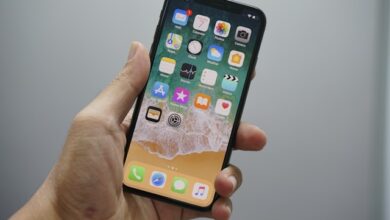11 Pieces of Tech You Really Don’t Need Anymore

They’re old and worthless, and you should get rid of all of them as soon as possible.
The phone in your pocket is now millions of times stronger than all of NASA’s combined computing resources in 1969, which helped put two people on the moon.
As breakthroughs in technology continue, further devices become obsolete. So, here are 11 devices you don’t anymore need. Let’s take a peek at what took their place—and why.
1. Typewriters
Typewriters are old keyboards that print directly on paper. Before typewriters, all official documents and communication were handwritten or produced on an expensive printing machine. Christopher Latham Sholes created typewriters in 1868 for an inexpensive alternative.
Mechanical keys were attached to lever-like metal surfaces with raised letters and characters on the promptly typewriters. To print on paper, an inked ribbon gets stuck between the paper and the metallic surfaces when you push a key.
It was an innovative technology that altered the way businesses operated and people expressed information. They had become necessary in offices by the mid-1800s. They ruled for over a century until being surpassed by computers. However, a lot of people, especially poets and novelists, still enjoy the tactile feel of typewriters, so they aren’t entirely extinct.
2. Payphones
Before mobile phones, communication was done using payphones. Users can use these public landlines to make calls and pay using cash, debit cards, or credit cards. Payphones are often found within booths or kiosks to provide the user with privacy, something modern phones have to sacrifice for mobility and convenience.
The first pay phone was set up in 1881, and by the 1900s, they could be found on major streets, train stations, and other public areas. However, they started to fall in the mid-2000s, when telecom giants AT&T and Verizon auctioned off their payphones.
3. Photographic Films
We live in the age of instant photography, when hitting and sharing a shot takes only a few seconds. People used to use nonetheless cameras that employed photographic films before this; the latter was created in 1885.
Previously, photography was only available to the affluent but the introduction of film launched photography. These light-sensitive photographic films were exposed to light briefly to capture photos of things before getting chemically processed to generate viewable photographs.
Because it was a time-consuming and costly process, digital cameras arrived in the 1990s. By the end of the century that followed, photographic films and film cameras had become obsolete.
4. Answering Machines
An answering machine performs the same function as your phone’s voice mail system. The only distinction between the two is that an answering machine records caller messages locally on storage media like cassettes, whilst a voice mail system stores them in a centralised computer server. If you found this information useful, here’s how to set up voicemail on your Android phone.
The first answering machine was developed in the 1930s, but it did not become common until the 1980s. By the early 2000s, voicemail had mostly supplanted answering machines, allowing users to listen to recorded messages from anywhere.
5. Pagers (Beepers)
People used to have landlines before mobile phones, and there was no way to transmit an emergency message to someone. To address this issue, Alfred J. Gross intended pagers for use in hospitals in 1949. These were radio communication devices with personal numbers, much like telephones.
So here’s how a pager works: anyone who knows your pager number can call your pager and send a message (a phone number or a brief text) to it. When you get a message, your pager will show it on the LCD screen.
While one-way pagers could only receive messages, two-way and response pagers could send them as well. Pagers became obsolete as mobile phones grew more common. However, they are still used (although infrequently) for emergency services such as healthcare and fire protection.
6. Cassette Tape
Although many people, particularly audiophiles, enjoy vinyl records, they are cumbersome and delicate to transport. Phillips generated small cassette cassettes in 1962 to tackle this issue. Initially, they were used for audio recording and playback. However, as the VHS standard evolved, cassettes began allowing video as well.
Cassettes were an enormous hit in the music industry, and they revolutionised how people listened to music. Cassettes allowed people to carry their music anywhere they wanted to. They remained popular throughout the 1970s and 1980s, but in 1991, CDs began to replace cassettes.
7. Floppy Disks
To transmit information between two computers today, we use cloud or external storage platforms, but floppy discs did the same things back in the day. Sharing programmes and loading operating systems got easier once IBM developed floppy discs in 1971.
They have been the go-to storage technique since the 1980s, replacing punch cards—a piece of paper with punched holes that represent data. However, because to storage limitations, CDs superseded floppies by the 1990s.
Floppy discs have a storage capacity of 1.44 MB, while ordinary CDs have a capacity of 700 MB. If you still have any old floppy discs lying around in a drawer, you may use them to make an array of useful items.
8. Portable Music Players
We may now watch high-quality audio without downloading files on iPhones and Android handsets. People didn’t have this choice before the 1970s; they could only listen to music at home or in their automobiles. The arrival of portable music players, however, changed all of that.
The Walkman played music on cassette tapes, but soon after, businesses generated portable CD players and MP3 players.
9. CDs
Compact Discs (CDs) were one of the most popular storage media at the time. CDs, a successor to cassette tapes, were created in 1982 by Philips and Sony for Hi-Fi digital audio reproduction. Older CDs could only hold 10MB of data, but they eventually achieved a maximum size of 700MB.
CDs quickly gained popularity in the music business because they had more space than competitors, making them perfect for storing high-fidelity audio. However, to be music streaming services took control in the late 2000s, CDs have become highly unpopular.
10. DVD Players
Currently, you are able to play or download a movie online, but this was not available in the 1990s. People rented DVDs and watched them on their televisions. A DVD player is an appliance that reads DVDs and shows the films on a TV using wires.
Toshiba created the first DVD player in 1996, succeeding VHS devices. They have since become a crucial part of home entertainment. They were readily embraced because to the low cost of DVD rentals and the low cost of DVD players. By the end of the 2000s, the industry had been overtaken by movie streaming services.
11. Instant Cameras (Polaroids)
Smartphones have gotten us so accustomed to taking, viewing, and saving images digitally that it’s impossible to remember a time when people printed pictures and kept physical albums. Until 1947, after having the pictures shot in a studio, you had to wait many days (often weeks) for them to develop.
In actuality, Jennifer Land, the daughter of American scientist Edwin H. Land, was the catalyst for the first instant camera when she asked her father, “Why can’t I see them now?” after having their images taken.
Land founded the Polaroid Corporation in 1937, with the goal to create a camera that could print a photo seconds after snapping it using specialised “instant films.” A decade later, the first instant camera was released to the public, and it was so popular that the term “Polaroid” came to be associated with the instant camera.
Purchasing a Polaroid or Fujifilm Instax is more of a fashion show than an essential. But, if you must have one, here are some things to think about before acquiring an instant camera.
Tech Grows Exponentially
We’ve gone a long way in the last two centuries, from barely being able to send messages via telegraph to engaging online.
With each new generation of technology, human society evolved, and technological gadgets swiftly grew obsolete. And, if current trends continue, this tendency is going to grow in the future.



